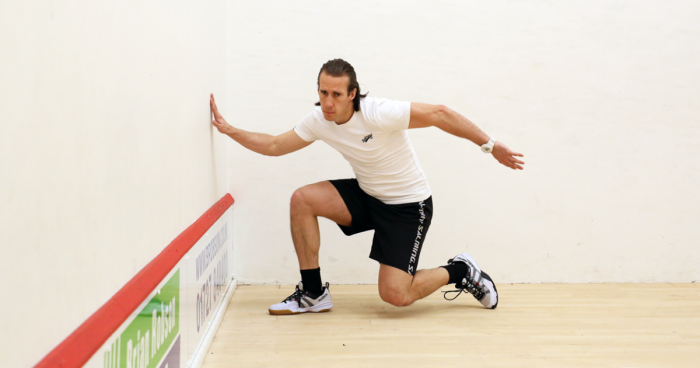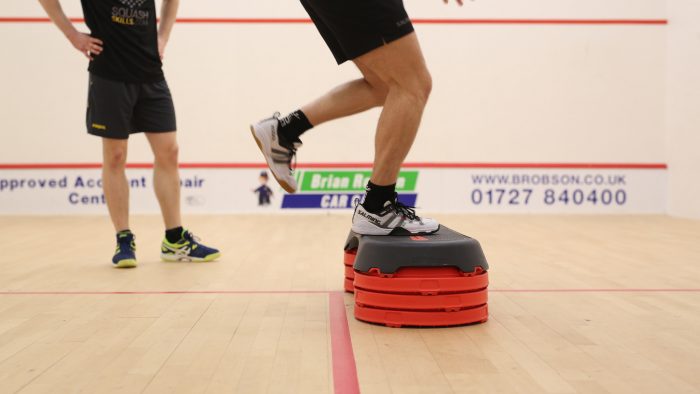Depending on the actual goals of the session, the make-up of a training drill intended to improve an aspect of our physical conditioning can take many different forms. Just as the mechanics of what we actually do will vary depending on the particular aspect of fitness we’re aiming to develop, so too will the actual effort and intensity of the session. Our goal with every session has to be clearly realised however, and our aim should always be GAIN and not just PAIN.
The four basic variables in a session that determine the training effect that will occur, are Frequency, Intensity, Time, and Type – neatly summarised with the acronym ‘FITT’. So how often we perform a session, the level of effort/demand, the duration, and the actual activities that go into making it up, are going to be what determines the results of that particular session over time.
What this means then is that, in a properly constructed programme, every session working on a particular aspect of our physical conditioning will look a little different – a power session would not generally very closely resemble an agility session, a speed session would look quite different to an endurance session, and so on.
This in turn means that the actual physical sensation of carrying out each different session will also vary – this is subjective to some extent, but the often reported ‘heaviness’ felt in the legs after a gym-based strength session, may well be quite different to the more common ‘burn’ felt after an endurance session for example. Some sessions are always going to be more fatiguing and physically demanding than others, and this brings me on to the main point of this article – not every physical training session should leave you exhausted at the end of it.
A big part of the issue is that too many people use pain/tiredness as the mark of a ‘good session’. Many is the time that I have put together a specifically designed session for an athlete, after which we finish and I return to the office or to another court/pitch for another client, only to pass back by 20 minutes later and notice they’re back out doing some ghosting or sprints or similar, because they felt they ‘still had something in the legs’!
While that kind of work ethic can perhaps be commended in theory, the thought process that every session should leave you completely shattered at the end of it is a very common, but also a very false one.
Training should be thought of as a ‘stimulus’ for the body to grow and develop, not an ‘obliteration’ of the muscles and draining of the energy systems that leaves you totally exhausted at the end of each and every session
 Being guided by the ‘harder is better’ approach will only lead to chronic over-training and reduced progress over time. It’s important to understand that training certain elements, such as in some of the speed and agility sessions we feature here on SquashSkills for example, the emphasis should be far more about the quality of the efforts, than the quantity – the duration and frequency of sessions such as these are purposefully limited, to ensure the body is exposed to the appropriate stimulus to improve (in this case, increasing the speed of the movement).
Being guided by the ‘harder is better’ approach will only lead to chronic over-training and reduced progress over time. It’s important to understand that training certain elements, such as in some of the speed and agility sessions we feature here on SquashSkills for example, the emphasis should be far more about the quality of the efforts, than the quantity – the duration and frequency of sessions such as these are purposefully limited, to ensure the body is exposed to the appropriate stimulus to improve (in this case, increasing the speed of the movement).
I often use the metaphor of ‘growing a flower’ – watering it should be consistent and measured and suitably spaced out, not just completely drenching it with a big bucket every now and then with no real pattern or plan.
Of course, some sessions are going to need to be very hard when training elements such as endurance/stamina for a sport so demanding as squash – you’ll find yourself able to push further and harder on these longer tougher workouts if you build and develop gradually, however, whilst ensuring that you keep these sessions spaced out and your training week interspersed with some shorter sharper drills focusing on other attributes that don’t leave you so physically exhausted. This will better allow your body the opportunity to properly recover between sessions, and grow stronger over time.
The mindset that every physical training session should be brutally hard and leave you aching all over is rather an old school one, but even now in many gyms, in particular, it is still quite prevalent – a lot of ‘gym-lore’ stems from bodybuilding training, where huge volumes of training are put in to grow large muscles, and which is unfortunately still the dominant mentality/approach even within many supposedly ‘educated’ Personal Trainers and Instructors. Needless to say, the goals of bodybuilding are very different to that of the average squash player.
 The sessions we post here on SquashSkills are designed to really focus on a specific element (or combination of) and help optimise your athleticism and overall physical capabilities. Get into the habit of planning out your workouts BEFORE you start, using the videos and articles on the site to help guide you as to the appropriate frequency, intensity, time, and type for each session devoted to a particular aspect of conditioning that you undertake.
The sessions we post here on SquashSkills are designed to really focus on a specific element (or combination of) and help optimise your athleticism and overall physical capabilities. Get into the habit of planning out your workouts BEFORE you start, using the videos and articles on the site to help guide you as to the appropriate frequency, intensity, time, and type for each session devoted to a particular aspect of conditioning that you undertake.
Pain/soreness/tiredness is NOT the best indicator of the quality of a workout – as you strive to progress your athleticism and all the component aspects of ‘fitness’, it is best to learn to train smarter, not just harder.
Gary Nisbet
B.Sc.(Hons), CSCS, NSCA-CPT, Dip. FTST
SquashSkills Fitness & Performance Director
Get squash-fit with exercising at home!
Check out the series where Gary Nisbet takes us through exercising at home and shows us how to make the most of training when you can’t get to a gym or on a court.
Watch now